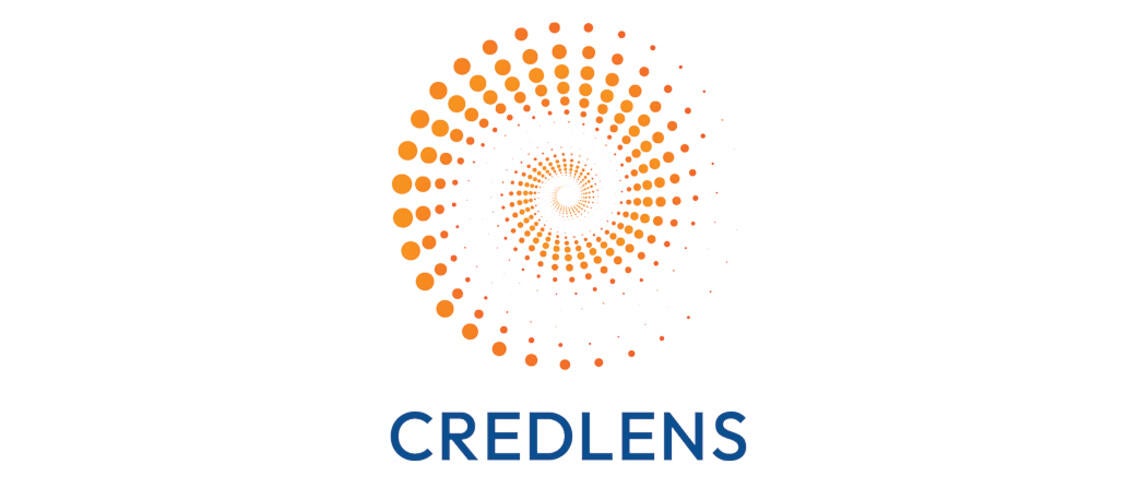Scott B. Sanders Testimony on Strengthening WIOA: Improving Outcomes for Job Seekers, Employers, and Taxpayers
STATEMENT OF
SCOTT B. SANDERS, PRESIDENT AND CHIEF EXECUTIVE OFFICER
NATIONAL ASSOCIATION OF STATE WORKFORCE AGENCIES (NASWA)
BEFORE THE
HOUSE EDUCATION AND THE WORKFORCE
SUBCOMMITTEE ON HIGHER EDUCATION AND WORKFORCE DEVELOPMENT
UNITED STATES HOUSE OF REPRESENTATIVES
STRENGTHENING WIOA: IMPROVING OUTCOMES FOR JOB SEEKERS, EMPLOYERS, AND TAXPAYERS
SEPTEMBER 20, 2023
NASWA
444 N Capitol NW, Suite 300
Washington, DC 20001
ssanders@naswa.org
Chairman Owens, Ranking Member Wilson, and Members of the Subcommittee, thank you for inviting me here today to testify on behalf of the National Association of State Workforce Agencies (NASWA). I particularly want to thank you, Chairman Owens, and Ranking Member Wilson for hosting this timely hearing to explore ways to improve Workforce Innovation and Opportunity Act (WIOA) services to better benefit both workers and employers as well as the broader economy.
I am Scott Sanders, President and Chief Executive Officer of NASWA, a national non-profit, non-partisan organization that represents state agencies who provide services to both workers, leading to their labor market success, and employers, creating talent pipelines of skilled workers. Prior to joining NASWA, I served as Commissioner of the Indiana Department of Workforce Development which operated the state’s workforce programs under WIOA, Adult Education and Unemployment Insurance.
NASWA members are the fifty state workforce development agencies, plus the agencies in the District of Columbia, Guam, Puerto Rico, and the Virgin Islands, which administer unemployment insurance, Workforce Innovation and Opportunity Act (WIOA) career services and skills development programs, labor market information programs, and in many instances, other human services programs. NASWA serves as an advocate for state workforce programs and policies, a liaison to federal workforce system partners, a forum for the exchange of information and promising practices, and a champion for state innovation and leadership in workforce development. NASWA is governed by a Board of Directors elected from the Administrators of the state workforce agencies.
Lessons NASWA members have learned from the COVID-19 pandemic and current economic recovery underscore the need for state flexibility and innovation to make necessary, strategic investments to provide cost-effective, results-oriented workforce services to greater numbers of workers and employers in urban, suburban, and rural locations. I will highlight four key opportunities to strengthen the management, delivery, and evaluation of WIOA services: (1) increased flexibility for states; (2) sustained staffing flexibility; (3) strengthened alignment of workforce programs with postsecondary education to support infrastructure and industrial investments; and (4) improved performance measurement and other data-driven strategies.
1. Increased Flexibility for States
WIOA is intended to enhance workforce investments in such areas as career pathways and industry partnerships as well as improve collaboration among core programs1 and other public and private sector partners. Under WIOA, the workforce system can become nimbler in responding to changing worker, employer, and workplace needs while providing better quality services and outcomes. To do so requires increased state flexibility, which enables states to anticipate labor market disruptions, support displaced and vulnerable workers, and help young people progress along paths that lead to career success. While NASWA members represent different populations, economies, and administrative structures, they agree that increased flexibility is essential to effectively respond to regional and cross-state challenges facing workers and employers. Without such flexibility, states will continue to face challenges in developing and implementing innovative strategies to produce desired short- and longer-term results.
Based upon their experiences from the field, NASWA members have identified several areas where increased state flexibility will make a positive and tangible difference to local, regional, and state economies.
- First, grant states the flexibility under WIOA to expand eligibility to incumbent workers who are at high risk of displacement, allowing states to proactively support worker transitions to high priority sectors or equip them with new skills to meet changing technology demands.
- Second, allow states the flexibility to utilize WIOA funding across WIOA programs – Adult, Dislocated Workers and Youth - to meet current needs and better anticipate future labor market disruptions. This would enable states to utilize existing WIOA funding to support other needs such as producing high quality, timely labor market statistics to support decision-making.
- Third, give states more flexibility under the WIOA youth program to prioritize state and local youth populations in need of career and employment opportunities and plan or oversee service delivery accordingly.
We believe these flexibilities will improve the workforce system’s capacity to deliver high quality services that connect people to jobs and employers to skilled workers in an environment where the economy, labor market(s), and workplaces are changing rapidly and in many ways since WIOA was enacted.
2. Sustained Staffing Flexibility
WIOA makes the Wagner-Peyser Employment Service (ES) program the primary component of most state workforce systems since services are universally available to all job seekers and all employers2. WIOA requires the ES program be physically located in WIOA One-Stop or American Job Centers (AJCs). ES customers are Adult, Dislocated Worker, and Youth program job seekers, workers, and employers; the ES program provides similar basic career services on a group or individual basis as those offered in One-Stop centers or AJCs. States oversee a network of One-Stops and AJCs that utilize various staff to deliver WIOA career services – state or local merit employees, contractors, other public or private personnel or a combination.
Neither the Wagner-Peyser Act nor WIOA require the use of state merit staff in the delivery of ES services through the One-Stop Center or AJC network – the merit staff requirement is a combination of policy and regulation. In practice and policy, ES staffing flexibility dates back to the early 1990s for states that demonstrated alternative staffing models such as Colorado and Michigan. In 2020, the U.S. Department of Labor (USDOL) issued another ruling that supporting these alternative staffing models and encouraged innovative and creative approaches to deliver ES services and activities. In 2022, the USDOL reversed course by proposing a new rule that would require state merit staff to deliver ES services, which would potentially disrupt service delivery, impose new costs, and create administrative burdens on the workforce system – a decision that is in direct conflict with WIOA’s intent to enhance coordination and integration of workforce related services.
Nearly all NASWA members urge the Subcommittee to support ES staffing flexibility in WIOA -- whether they will exercise this possibility or not. This would ensure that demonstration states and other states that operate alternative ES service delivery models, in whole or in part, can continue to do so. In addition, such policy could encourage other states interested in seeking innovative, cost-effective alternative staffing models to undertake and test new ways to improve the delivery of ES and WIOA career services.
3) Strengthened Alignment of Workforce Programs with Postsecondary Education to Support Infrastructure and Industrial Investments
To meet the goals Congress established in the Bipartisan Infrastructure Law (BIL), the Creating Helpful Incentives to Produce Semiconductors (CHIPS) and Science Act, and the Inflation Reduction Act (IRA), dynamic partnerships that engage state workforce and education systems, industries, community organizations, and others will be required and will enable informed, strategic decisions and actions resulting in successful outcomes. To succeed, these infrastructure, semiconductor manufacturing, energy, and related sectors ultimately need to employ thousands of workers equipped with the skills, knowledge, and postsecondary credentials to meet employers’ needs. If these infrastructure investments can bring funds to the workforce system, federal agencies must work together to assure that state agencies have a vital role at industry strategic planning tables and support state agencies with the resources, technical assistance, and guidance to ensure the success of the historic infrastructure investments.
The Subcommittee should be aware that across the country, and supported by NASWA, multi-state data collaboratives are supporting state agency efforts to increase data quality and analytics and expand access to data and data sharing among workforce, postsecondary education, human services, and other agencies. Almost thirty states in the Midwest, East, and South participate in multi-state collaboratives with NASWA to provide enriched insights and research findings to help the workforce system (and related partners) better respond to the information needs of customers, policymakers, and practitioners. To sustain these multi-state collaboratives and expand them to other states, NASWA suggests that the Subcommittee:
- Enhance partnerships among workforce, education, and labor market systems to include infrastructure and other industry partners to align resources that support more informed decision-making and go beyond the production of basic state workforce data.
- Direct the federal agencies implementing infrastructure and industry investments to align resources, including planning and grant-making actions, to support state workforce systems as they address significant workforce and employer needs.
This will require some rethinking of programming by all affected federal agencies and active engagement of state agencies and other partners. However, NASWA suggests that by doing so, current, and future resources, will more cost-effectively provide better workforce system outcomes.
4) Improved Performance Measurement and Other Data-Driven Strategies.
WIOA, when enacted in 2014, made significant changes to strengthen and align performance accountability to assess the effectiveness of states and local areas in achieving positive outcomes for the individuals served under the six core programs. For example, WIOA (1) created and requires each core program to use six common performance measures and collect data using a common set of data elements; (2) required a statistical adjustment model be used to negotiate state and local WIOA performance goals; (3) obliged eligible training providers (ETP) to submit performance data on all students in approved programs; and (4) required states to submit annual reports on ETP performance and make labor market information available to inform state and local WIOA plans, including in-demand industries and occupations. WIOA also emphasized integrated reporting systems and state evaluation activities.
In addition to these positive changes, states identified several challenging impacts created by the complexity of WIOA performance accountability requirements. For example, states faced:
- Changes to customer-level reporting and resulting need for staff professional development and guidance for local or regional workforce areas;
- A new process of negotiating performance targets at the state and local levels;
- The collection of new data especially from eligible training providers (ETPs) and others; and
- Confusion about the meaning and usefulness of select new performance indicators (such as fourth quarter employment after leaving the WIOA program, meaningful skill gains, or effectiveness in serving employers) which each required modifications to information systems and the provision of related state, local, and provider staff professional development.
NASWA members fully support WIOA’s vision for a strong and transparent performance accountability system. However, this does not mean more performance-related data; rather, it means data sets that are accessible to and used by WIOA customers, policymakers, and practitioners. For example, WIOA could:
- Incent states to work across sectors and state lines to leverage linked administrative data including state longitudinal educational and workforce systems for both policy and practice. This should include support for enhanced data analytics and research and evaluation expertise in state workforce and education agencies.
- Support ways for states to demonstrate how to create a more cost-effective way of obtaining better participant outcome data from such sources as individuals’ employment from the National Directory of New Hires, enrollment in postsecondary education from the National Student Clearing House, or matching individual’s tax data from the IRS.
More immediately, NASWA recognizes the time pressure on the Subcommittee to improve performance accountability and the use of data to “get the model right.” Should you, Chairman Owens, and Ranking Member Wilson agree, NASWA offers to assemble a small group of performance and technical experts from states to help you and your staff determine how best to improve WIOA performance accountability, including data use and evaluation.
Thank you for the opportunity to share NASWA’s view about strengthening WIOA. NASWA and its members look forward to engaging with you, Chairman Owens, Ranking Member Wilson, and Members of the Subcommittee to improve services that best address the needs of our member states, and America’s jobseekers, workers, and employers during these challenging economic times.
1Core programs are Title I Adult, Dislocated Worker, and Youth programs and Title III Employment Service program authorized under the Wagner-Peyser Act administered by U.S. Department of Labor; and the Title II Adult Education and Family Literacy Act program, and Title IV State Vocational Rehabilitation programs under the Rehabilitation act of 1973 administered by the U.S. Department of Education.
2A service unique to the ES is administration of the Work Test to workers a state determines are eligible for UI benefits to ensure they are able, available, and actively seeking work consistent with state law.






































